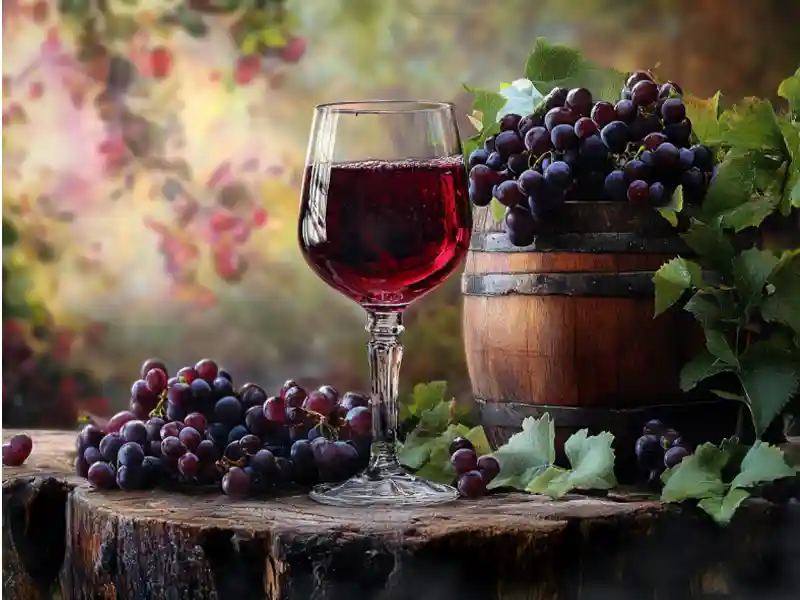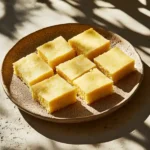Old-Fashioned Muscadine Wine
Learn how to make homemade muscadine wine with this easy recipe!
This recipe utilizes the sweet and tart flavors of muscadine grapes to create a delicious, old-fashioned wine. With just 3 main ingredients and a little patience, you can craft your own homemade wine to enjoy and share.
What are Muscadine Grapes?
Muscadine grapes are native to the southeastern United States and thrive in warm, humid climates. They are larger than traditional wine grapes with thicker skins and a unique flavor profile. While they can be used to make jams, jellies, and other treats, they truly shine in winemaking.
Why Muscadine Grapes Make Great Wine
Muscadine grapes produce wines with a distinctive character. Historically, these wines were often quite sweet, but modern winemaking techniques now showcase the grapes’ natural flavors, resulting in refreshing, medium-bodied wines that are perfect for dessert or as an after-dinner drink.
Tips for Making the Best Muscadine Wine
- Sanitize: Thoroughly sanitize all equipment to prevent bacteria and mold growth.
- Mash the grapes: Use a potato masher to crush the grapes, releasing their juices.
- Skip the sulfites: While sulfites can extend shelf life, they aren’t necessary for this recipe.
- Use filtered water: Filtered water ensures a better-tasting wine and prevents chlorine from inhibiting yeast activity.
Ingredients:
- 6 cups granulated sugar
- 3 quarts filtered water
- 1 quart mashed muscadine grapes (approximately 4 pounds of grapes)
- 1 (1/4-ounce) packet active dry yeast (7 grams)
Equipment:
- 1-gallon heat-safe glass container
- Clean kitchen towel or cheesecloth
- Airlock
- Sanitizing solution (optional)
Instructions:
- Dissolve the sugar: In a sanitized gallon-sized glass container, dissolve the sugar in the filtered water.
- Add grapes and yeast: Add the mashed muscadine grapes to the sugar water and sprinkle the yeast over the top. Do not stir.
- Initial Fermentation: Cover the container with a clean cheesecloth or kitchen towel and place it in a cool, dark area (ideally 68-72°F). Let the mixture rest for 24 hours.
- Stir Daily: After 24 hours, stir the mixture well and cover it again. Continue stirring the mixture once daily at the same time for a full week.
- Strain and Transfer: After seven days, strain the liquid into another sanitized gallon container fitted with an airlock. Top off the container with additional filtered water.
- Ferment: Allow the wine to ferment for six weeks in a cool, dark place.
- Strain and Bottle: After six weeks, strain the wine again and transfer it to a clean gallon container. Cap lightly for three days to allow any remaining fermentation to subside. Then, bottle the wine in airtight containers.
Storage:
Store your homemade muscadine wine in a cool, dark place. Properly stored, it should last for 3 to 6 months. However, discard the wine if you notice any off-putting smells, mold, or changes in texture.
Additional Notes:
- This recipe yields approximately 1 gallon of wine.
- The alcohol content of muscadine wine is typically around 10% ABV.
- Experiment with different varieties of muscadine grapes for unique flavor profiles.
- Consider adding other fruits or spices during the fermentation process to create your own custom blend.
- Remember to drink responsibly!
Enjoy your homemade muscadine wine! 🍷
Nutritional Benefits
- Muscadine grapes are rich in antioxidants, supporting heart health and immunity.
- They contain resveratrol, which has been linked to anti-aging and anti-inflammatory properties.
- The natural sugars in muscadine wine provide instant energy, enhancing mood and vitality.
- Low in sodium, it supports healthy blood pressure levels when consumed in moderation.
Enjoying muscadine wine not only tantalizes your taste buds but also provides a multitude of health benefits, allowing you to savor every sip knowing you are nourishing your body.
Possible Additions or Upgrades
Consider experimenting with additional flavors like vanilla beans, spices such as cinnamon or clove, or even berry infusions for a unique twist. You can also age your wine in oak barrels for added complexity, bringing depth to your flavor profile.
Frequently Asked Questions
Can I use store-bought muscadine grapes?
Absolutely! Store-bought grapes can yield fantastic flavors if sourced for quality and ripeness.
What is the best time to harvest muscadine grapes?
The ideal time is late summer through early fall when the grapes are fully ripe.
Can I make muscadine wine without adding sugar?
While it’s possible, adding sugar enhances fermentation and sweetens the wine; consider the natural sweetness of the grapes to adjust.
Do I need any special equipment?
Basic winemaking equipment like fermentation vessels, bottles, and siphoning tubes will suffice.
How long does it take to ferment?
Fermentation typically lasts 1-3 weeks, followed by aging for several months for the best flavor.
Can this wine be carbonated?
Yes! To carbonate your wine, you can add priming sugar before bottling.
How do I know when my wine is ready to bottle?
When bubbling slows down and the wine clears, it’s usually ready to bottle.
What is the alcohol content of muscadine wine?
Typically, it ranges from 8-12% alcohol by volume, depending on the fermentation process.
How should I store my wine?
Store bottles upright in a cool, dark place, and allow for six months of aging for optimal flavor.
Can muscadine wine be served chilled?
Absolutely! Chilling can enhance the fruity flavors, making it a refreshing choice.
From my experience crafting muscadine wine, each batch tells a story of the season and the grapes that were used, bringing together friends and family to celebrate the fruits of our labor. With every bottle, a journey unfolds, filled with laughter, joy, and unforgettable moments. I encourage you to share this recipe with others on social media and spread the joy of creating muscadine wine. Cheers to your new adventure in winemaking!



